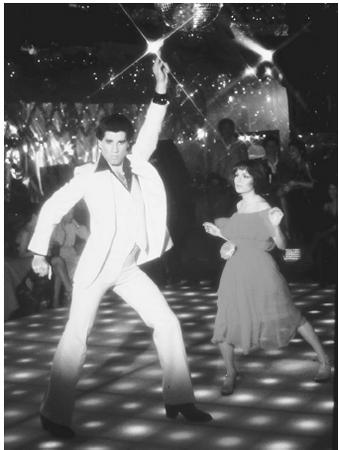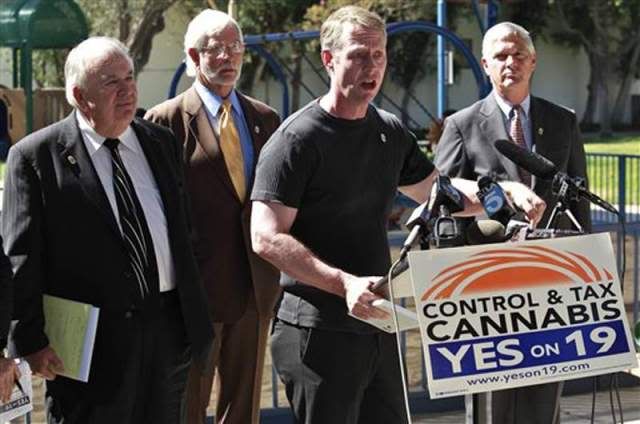Ballotopedia: Proposition 203The Arizona Medical Marijuana Policy Project filed the petition with the Secretary of State’s Office on November 23, 2009, which listed Diane Manchester as the official chairman of the organization. Manchester is a former civilian employee of the Phoenix Police Department who retired on disability. She has turned to medical marijuana in order to help her cope with pain that results from her multiple sclerosis. She has taken her place as chairman due to the growing fear among medical marijuana patients that they might be arrested. According to Manchester: “I am so prone to being scared, and it’s terrible. I want to stop the fear of the people who need it (marijuana). I am so tired of not being able to tell the truth. I know when my name and picture are out there people are going to know me. And that’s okay.”[7]
The Arizona Republic, July 2, 2010As of Thursday's filing deadline, nine measures qualified for the Nov. 2 general-election ballot. But only one initiative - an effort to legalize medical marijuana - qualified for through a citizen petition.
Proposition 203, driven by the Arizona Medical Marijuana Policy Project, proposes to allow patients with a debilitating medical condition such as cancer, HIV or multiple sclerosis to purchase, possess and use 2.5 ounces of marijuana every two weeks with a doctor's recommendation.
Non-profit dispensaries regulated by the state would grow and sell the drug to approved patients.
It still would be illegal to use marijuana in a public place or drive under the influence of marijuana, but the initiative would forbid employers from firing qualified medical-marijuana users who test positive for the drug unless they can prove patients used or were impaired while at work.
This current Arizona proposition differs from California's 1996 medical marijuana law. The Arizona proposition creates non-profits to dispense marijuana that are regulated by the state. California law allows for-profit sales that are not state regulated. Among the other 14 legal marijuana laws in this nation, states allow personal cultivation.
In 1996, the people of Arizona voted to enact a medical marijuana law. The Arizona Legislature voted to overturn the will of the people. The Arizona medical marijuana law was to be hamstrung by federal drug scheduling that prevents doctors from prescribing medical marijuana on the basis of its erroneous scheduling. Catch-420. Doctors were threatened with revocation of their licenses to practice if they prescribed cannabis. Arizona voters rejected that attempt by legislators to impede the implementation of the law in 1998.
Drug Policy AllianceAn analysis by the Arizona Supreme Court found that Proposition 200 diverted 2,600 non-violent offenders into drug treatment in its first year, saving Arizona taxpayers $2.56 million. Over three-fourths of the offenders tested drug-free after completing the program. A follow-up Supreme Court study in 2001 found that Proposition 200 saved taxpayers over $6 million in prisons costs in its second year. The Supreme Court concluded, “The Drug Medicalization, Prevention and Control Act of 1996 has allowed the judicial branch to build an effective probation model to treat and supervise substance abusing offenders.
...Despite the fact that two out of three Arizona voters voted for Proposition 200, the Arizona legislature passed legislation overturning most of the initiative. In 1998, voters supported referendums on the legislation such as Proposition 300 and 301 and defeated the changes. Voters also approved an initiative making it more difficult for legislators to tamper with voter-approved initiatives in the future.
In November of 2002 voters narrowly rejected a new drug policy reform bill, Proposition 203. This bill would have decriminalized small amounts of marijuana, repealed mandatory minimums, set up a medical marijuana program, and removed court control of non-violent drug offenders. The bill still won the support of 43 percent of voters, demonstrating that support for such bills continues despite resistance from federal officials.
Proposition 203 got on the ballot in Arizona with 252,000 submitted signatures. One fiscal budget legislative study projects that 66,000 citizens of Arizona would qualify as medical marijuana recipients under the current proposition.
Doctors must continue, however, to contend with FDA drug scheduling that hinders the legal use of marijuana - a substance that is considered more dangerous to the federal government than Oxycontin, aka "hillbilly heroin," aka Limbaugh's drug of choice.
This scheduling continues in spite of the reality that there is no realistic scenario for overdose of cannabis in its natural form or any studies that indicate cannabis is physically addictive...again, unlike Oxycontin or Valium or a host of other barbiturates that are physically addictive and able to cause death in users by over- or misuse.
Arizona Republic, September 19, 2010Even physicians who staunchly oppose the proposition said marijuana can provide medicinal relief for patients.
Dr. Lesley Meng, an oncologist who runs Desert Springs Cancer Care in Scottsdale, said 5 to 10 percent of her patients have told her they use marijuana for medicinal reasons. The clinic sees about 50 to 60 patients a day, she said.
Dr. Sue Sisley, who has a private practice in Scottsdale and specializes in internal medicine and psychiatry, said she has seen patients' quality of life improve after using marijuana to cope with chemotherapy or AIDS side effects.
Dr. Carol Peairs, an anesthesiologist in Phoenix who specializes in pain management, said she does not support Prop. 203 because "anecdote and emotion are not the way to prove a new medicine."
Dr. Ed Gogek, a psychiatrist in Prescott who specializes in addictions, said the medical community "absolutely recognizes" that marijuana is an addictive drug. Marijuana is not as addictive as tobacco or cocaine but about as addictive as alcohol, Gogek said.
Dr. Peairs might want to avail herself of the thousands of studies that indicate the value of medical marijuana.
NORML has a link here.
In 2008, investigators at McGill University Health Centre and McGill University in Montreal and the University of British Columbia in Vancouver reviewed 23 clinical investigations of medicinal cannabinoid drugs (typically oral THC or liquid cannabis extracts) and eight observational studies conducted between 1966 and 2007. Investigators "did not find a higher incidence rate of serious adverse events associated with medical cannabinoid use" compared to non-using controls over these three decades.
In some of these cases, modern science is now affirming longtime anecdotal reports of medicinal cannabis users (e.g., the use of cannabis to alleviate GI disorders). In other cases, this research is highlighting entirely new potential clinical utilities for cannabinoids (e.g., the use of cannabinoids to modify the progression of diabetes.)
This confirmation of anecdotal reports has taken place
in spite of the federal government's attempt to demonize the use of a plant for medical use.
Dr. Gogek might want to elaborate on the studies noted by the
Drug Policy Alliance that indicate marijuana is mildly addictive in less than 1% of the user population.
Fact: Most people who smoke marijuana smoke it only occasionally. A small minority of Americans - less than 1 percent - smoke marijuana on a daily basis. An even smaller minority develop a dependence on marijuana. Some people who smoke marijuana heavily and frequently stop without difficulty. Others seek help from drug treatment professionals. Marijuana does not cause physical dependence. If people experience withdrawal symptoms at all, they are remarkably mild.
*United States. Dept. of Health and Human Services. DASIS Report Series, Differences in Marijuana Admissions Based on Source of Referral. 2002. June 24 2005.
*Johnson, L.D., et al. “National Survey Results on Drug Use from the Monitoring the Future Study, 1975-1994, Volume II: College Students and Young Adults.” Rockville, MD: U.S. Department of Health and Human Services, 1996.
*Kandel, D.B., et al. “Prevalence and demographic correlates of symptoms of dependence on cigarettes, alcohol, marijuana and cocaine in the U.S. population.” Drug and Alcohol Dependence 44 (1997):11-29.
*Stephens, R.S., et al. “Adult marijuana users seeking treatment.” Journal of Consulting and Clinical Psychology 61 (1993): 1100-1104.
All physicians in Arizona might want to investigate this statement by the former DEA administrator Frances Young:
"In strict medical terms marijuana is far safer than many foods we commonly consume. For example, eating 10 raw potatoes can result in a toxic response. By comparison, it is physically impossible to eat enough marijuana to induce death. Marijuana in its natural form is one of the safest therapeutically active substances known to man. By any measure of rational analysis marijuana can be safely used within the supervised routine of medical care.
(US Department of Justice, Drug Enforcement Agency, "In the Matter of Marijuana Rescheduling Petition," [Docket #86-22], (September 6, 1988), p. 57.)
This statement was made
more than twenty years ago. I would be hesitant to consult any doctor who chose to remain ignorant about the medical truth of a substance for more than twenty years.




